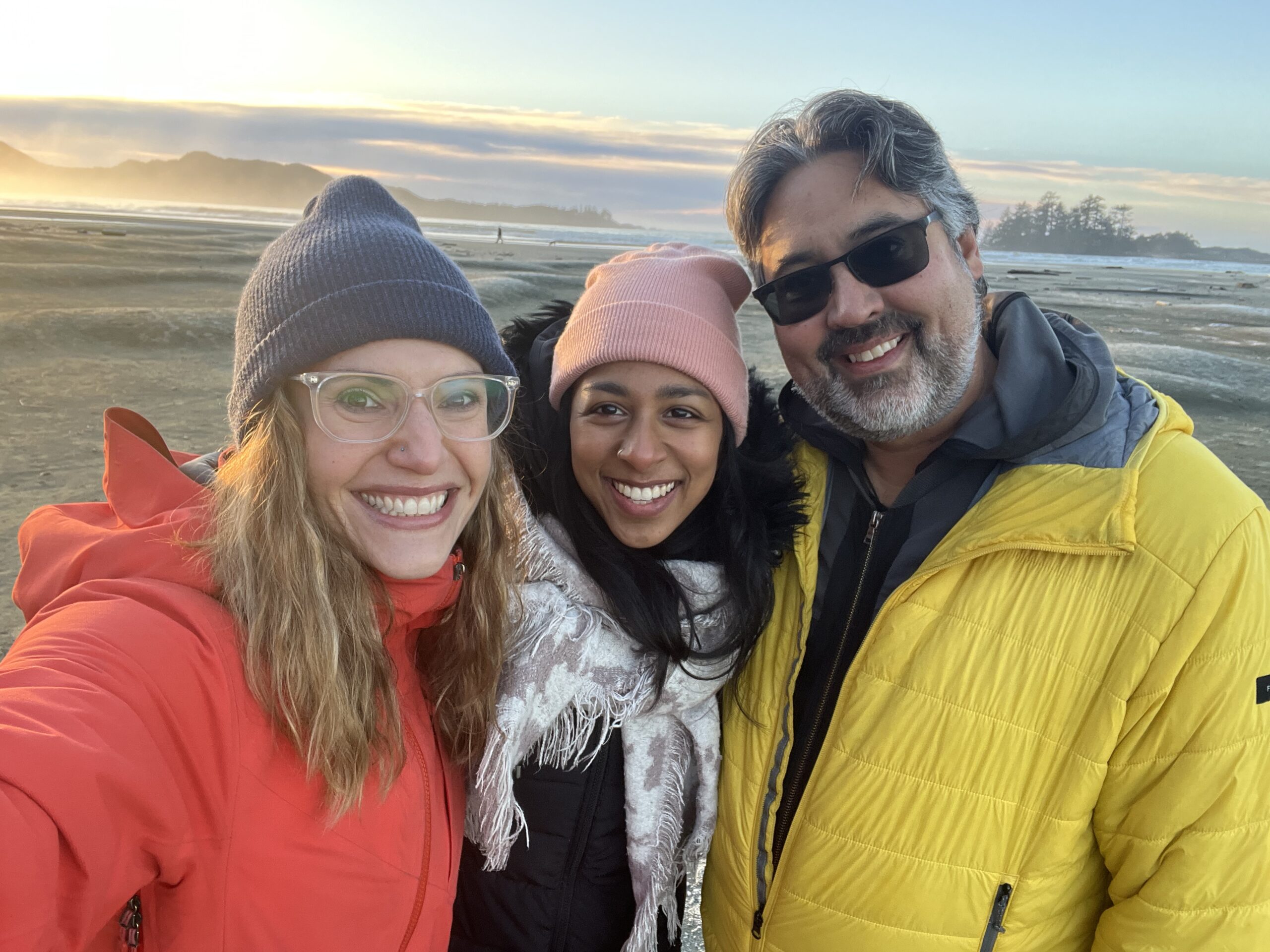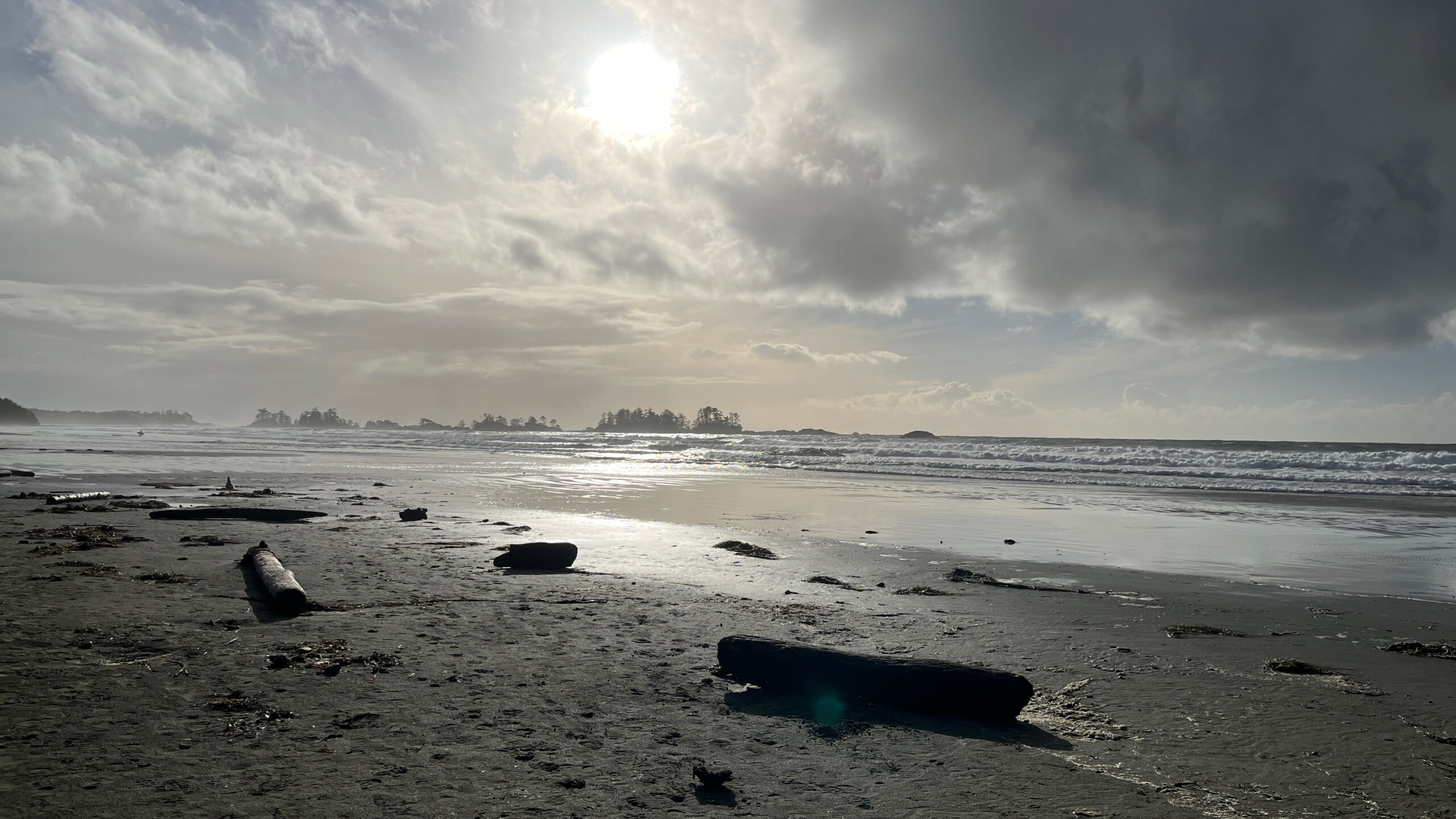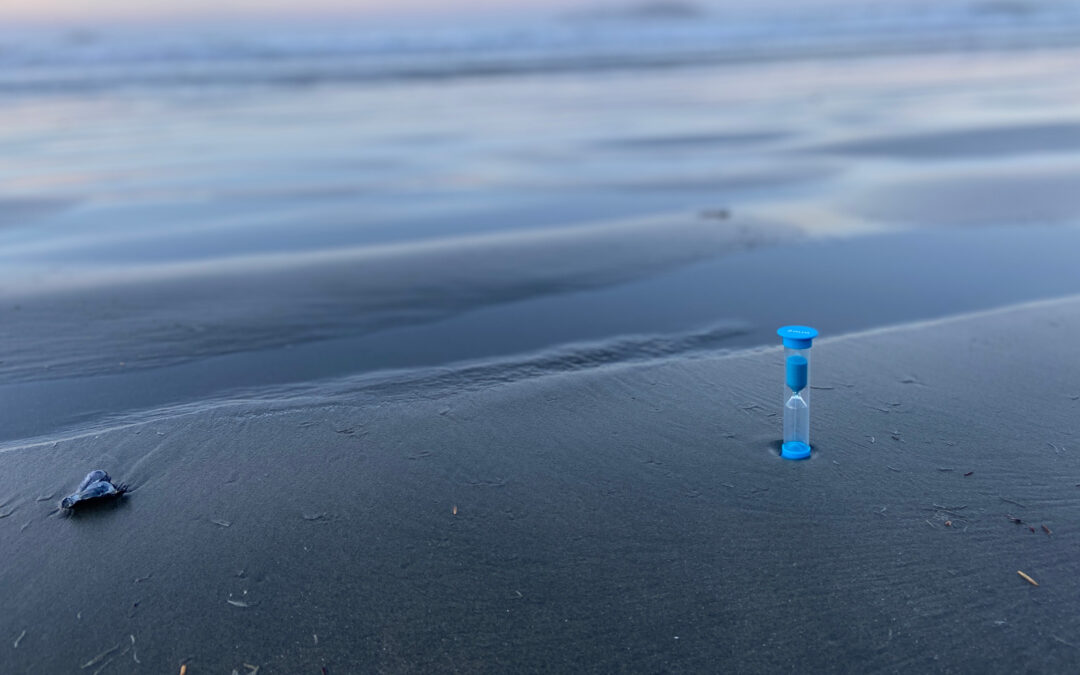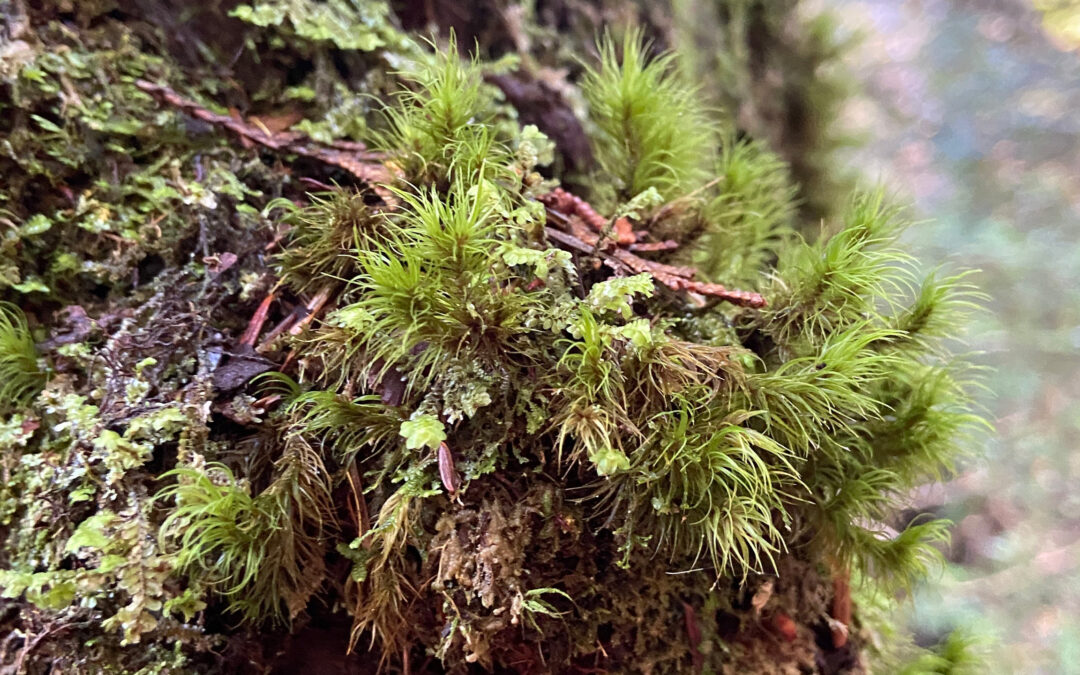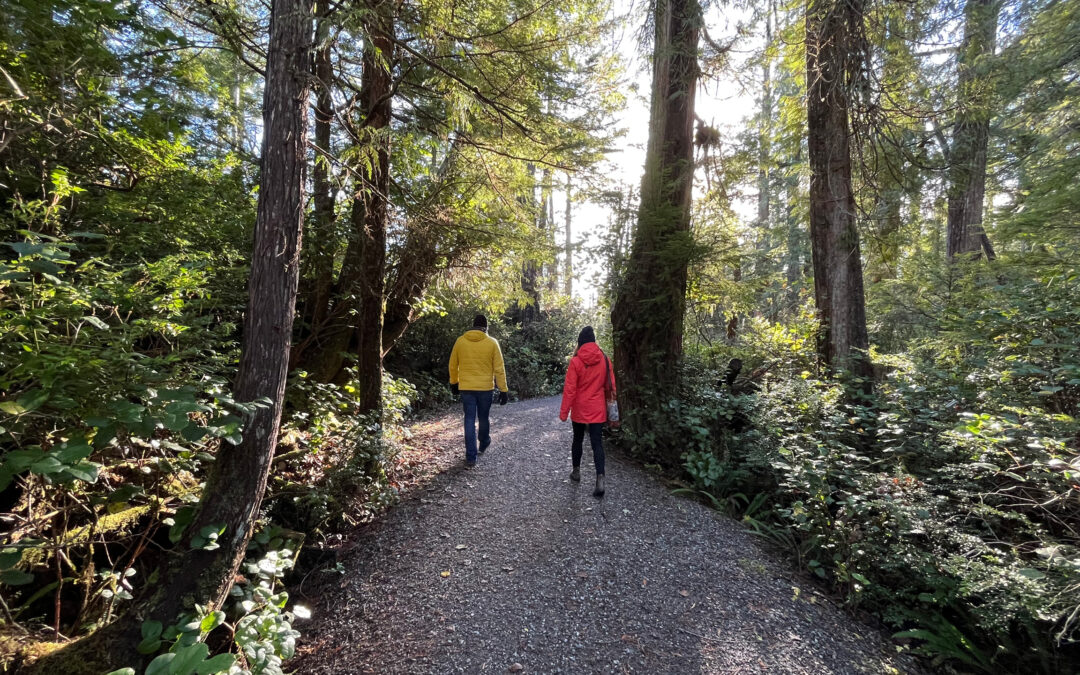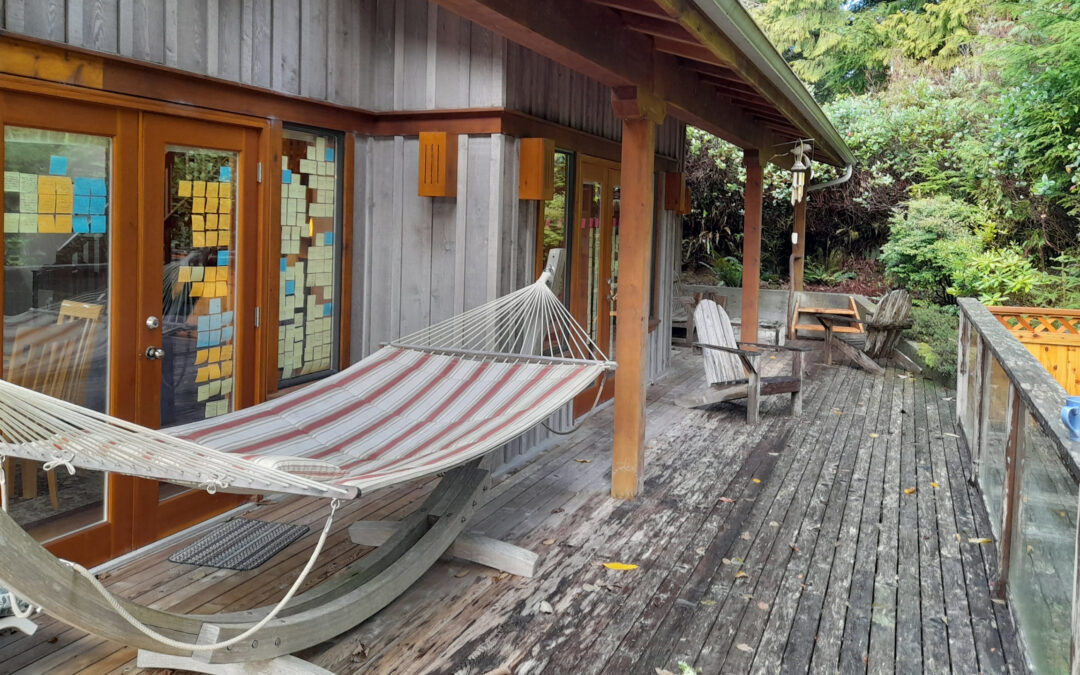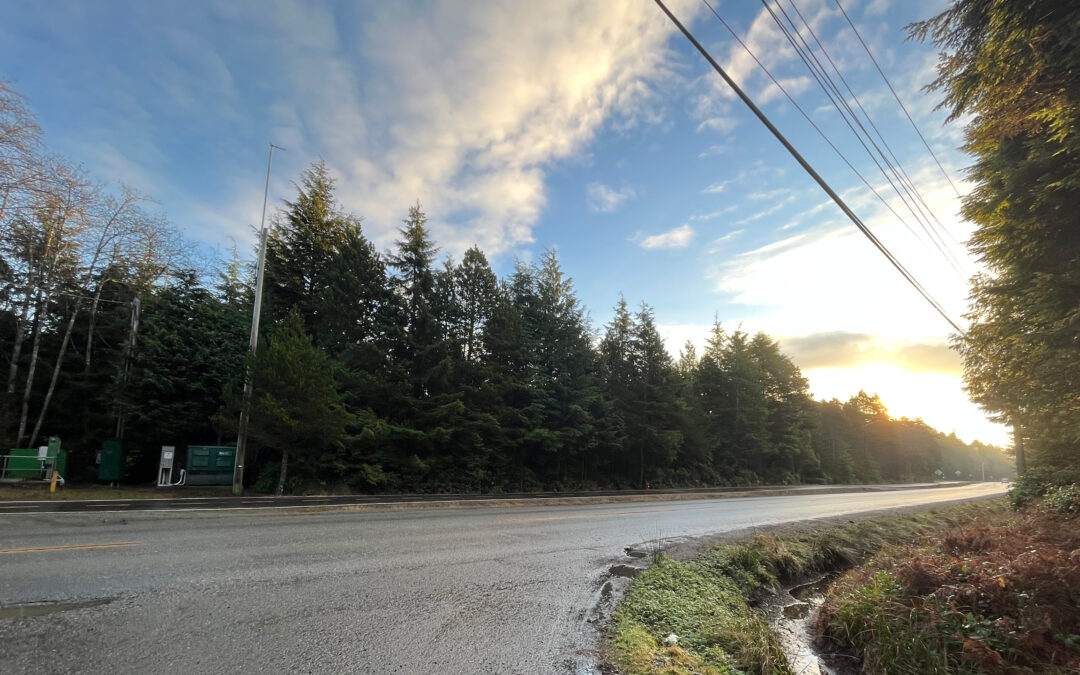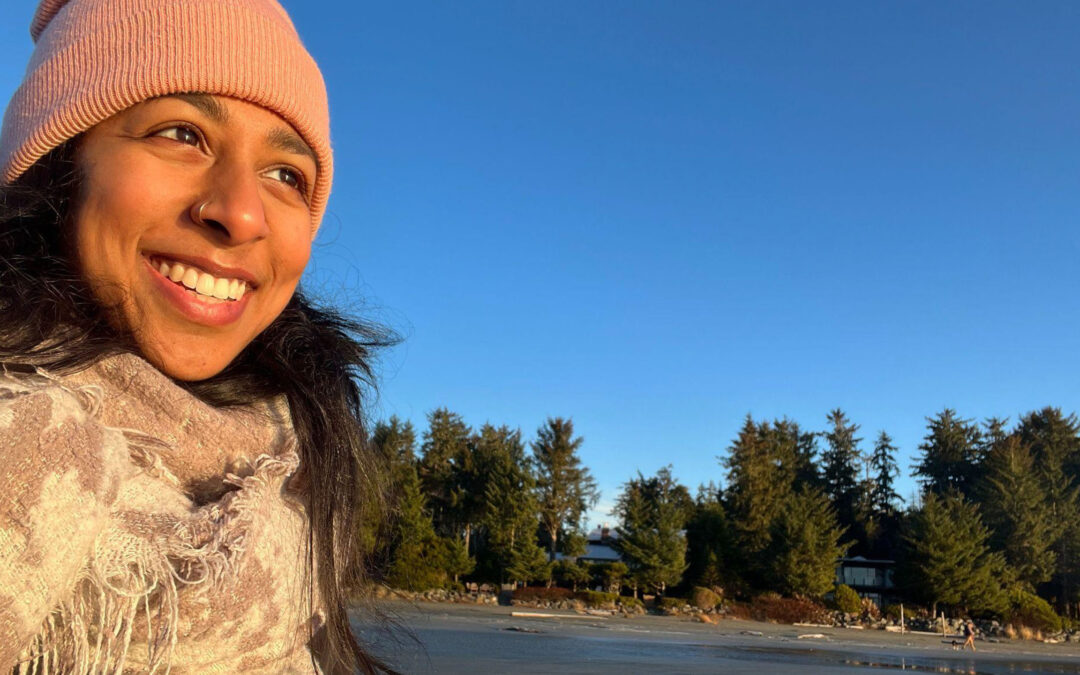In the ethos of Octavia E. Butler’s quote: “All that we touch we Change, all that we Change, Changes us”, we the practitioners of the Mortal Method, have both shaped and been shaped by the method. The blogposts in this series share a window into these impacts, whether it be through reflections on gathering around a specific purpose, the power of preparation, the experience of challenging dominant norms within academia, taking an emergent and responsive approach, contending with paradox, or using creative and body-based experiences for meaning-making. In this final blogpost of this series, we share some of the ways in which engaging in this work has changed how we see and move in our work, lives, and world.
“It’s not just that we sat & thought about the qualities for months, it’s that we practiced applying them…we’ve seen the benefits in the work we do with each other & I’ve seen the ripple effects outside of this project because I’m coming to my other work & personal life embodying these things more.” – JB, at the retreat
1) Bringing more arts into education
Incorporating arts-based exercises into the design of the Mortal Method practice and retreat and experiencing firsthand the ways in which it opened us up to different ways of knowing and processing has pushed us to build more of the arts into our work and teaching.
“We had also talked about meaning-making in the arts a lot early on in the process. And we used that in the process at the retreat. But it also personally stretched me to collaborate more with people in the fine arts and to bring more arts into my teaching. To be like, this is how you connect with people. It’s not just the scholarly literature.” – JB, Feb 10
“I’m doing this exercise with students and I designed it using the Mortal Method. I give them a reading, I do a mini lecture for them on finitude, and then I do a guided meditation with them asking them to reflect on their relationship with time. Then at the end, they have to write a haiku poem. So they have to work with limited time and limited syllables to express their relationship to mortality.” – JB, Jan 27
2) Centering the needs of our body in our day-to-day
In practicing bringing attention and intention to our bodies and how we engage with them, the Mortal Method continues to invite us to listen to the wisdom within our somas and use it as data to guide our actions.
“About how this is changing us, I realize how much more I am listening to my body about different things and how relieved I feel. – JB, Nov 24
“Another answer to “how are we different since the retreat?”, I was in one public health meeting where we were scheduled to meet for an hour and a half. At an hour and 15mins someone said, “OK, now we’re going to get into this stuff,” and I was like, “There’s no way we can do this in 15 minutes.” So I said, “I’m sorry to interrupt. I’m assuming we’re going to go over time. I’m really hungry. I can barely pay attention anymore and I have to pee. Can we take a break and come back in five minutes? And then I will actually be able to participate in and be of service in this meeting.” And my colleagues were like, “OK,” and we all went to the bathroom. We all got food. And it ended up being another 45 minutes that we were there. And I think had I not asserted my body’s needs, we would have all been sitting there with our legs crossed and our stomachs growling, just wishing the meeting was over… But because of the work we did, I was like, ‘No, my body is allowed to assert itself here. I’m not just a machine.'” – JB, Jan 27
“Right after the retreat, before I got COVID for two weeks, I was waking up every morning and exercising before I started my day and just making time for it because I was like, “my body’s not an inconvenience…like, no, this is the stuff of living.” And I was doing yoga a lot of evenings, and when I wasn’t, I would use my little meditation app and I was just feeling very zen in my day -to-day. It didn’t feel like I was heavily affected by stuff as much. I could roll with the punches and was okay. I was balanced.” – JB, Jan 27
“We sticky-noted all the projects we were involved with and all the tasks related, and I was checking in with my gut feeling. Whenever we talked about [project x], I got a knot in my stomach? I felt the aversion. I’m like, ‘I don’t want to work on that. I don’t want to do that. I don’t look forward to those meetings.’ And it was the Audre Lorde thing about the erotic – once you know what an enthusiastic ‘yes’ feels like, you don’t want to settle for anything less. And I was like, ‘I’m not going to spend time on work that doesn’t feel meaningful and rewarding.’” – JB, Jan 27
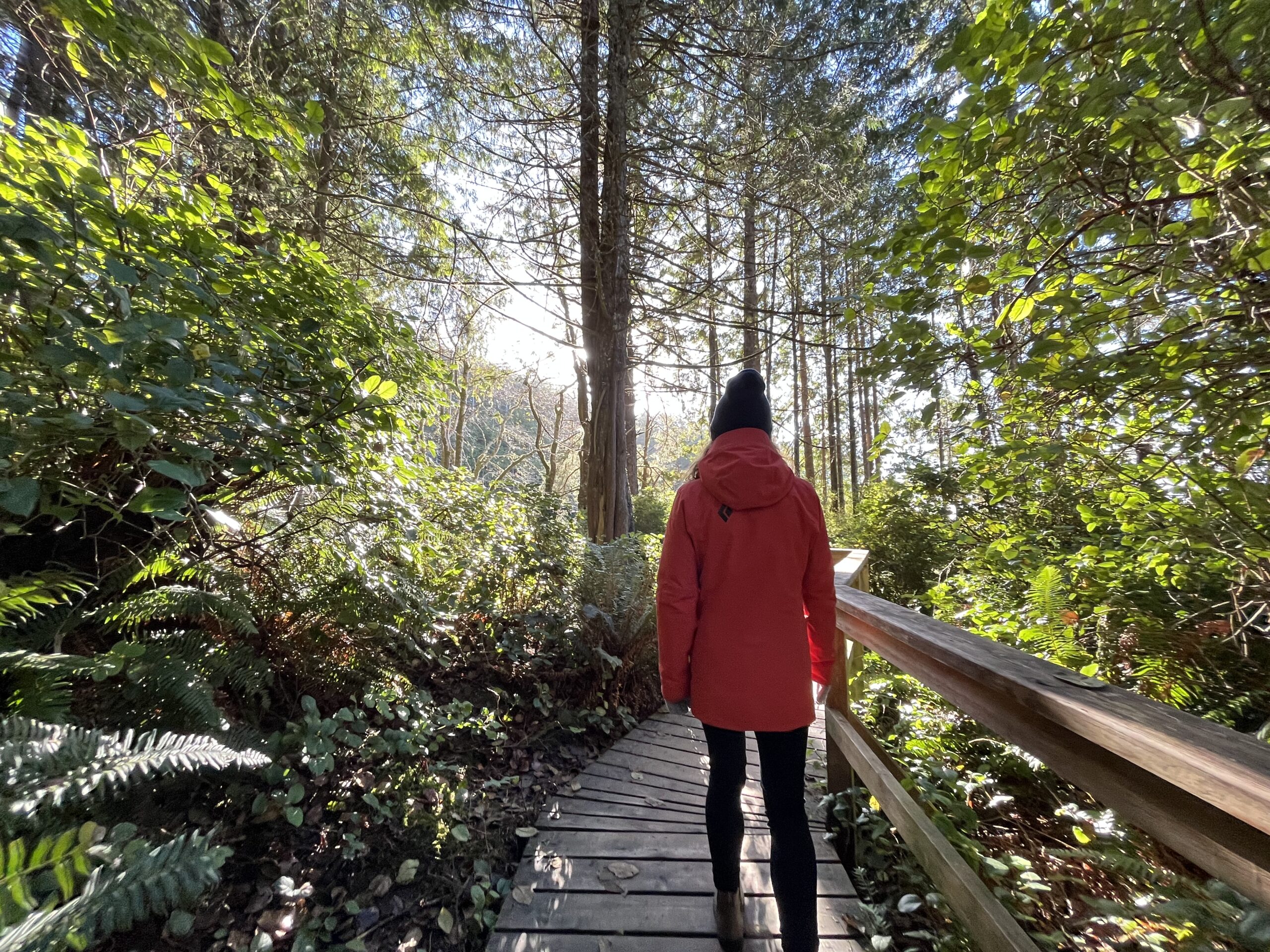
3) Realizing that the Mortal Method practice is a non-negotiable vs. a nice-to-have
The Mortal Method practice began as an experiment in preparing ourselves for the retreat. In retrospect, it almost feels irresponsible to invite people to engage with this method without having a similar foundation upon which to build a relationship to the qualities of mortality. The practice also allows us to show up with more clarity around our beliefs and experiences with respect to a particular quality (e.g. finitude) and how our body reacts when talking about these topics. Given that not everyone may have the capacity or access to take on the 30-day Apprenticeship with Mortality practice in the same way we did, we are open to exploring different ways to prepare our minds, emotions, bodies, and spirits in order to engage sustainably in this work. Personally, I have begun to incorporate a pre-retreat and post-retreat practice in all of the subsequent retreats I’ve facilitated since the Mortal Method retreat.
“If somebody wanted to do this work and do it well, I would encourage them to do an apprenticeship of sorts in advance of it.But how do we ask for that kind of time commitment from people who don’t have the privilege that we have right now? I remember the breakneck, frenetic, pre-pandemic pace of pre-tenure and the external pressures and internal ones where this is probably exactly what you need, but not what you have time for. How do we meet someone where they’re at? Someone who feels like, ‘I have this review coming up. I need to get two publications by this time to meet this departmental standard or else I won’t get any merit pay. Or my grant ends at this time and I have to spend the funds by X date and have the papers done by then so that I can pay for open access fees…these are real considerations for people being able to keep their jobs…So are there ways to fold in a practice that could look different from how we’ve done it , but still get at some form of establishing a practice?” – JB, Nov 10
“That’s why I think what we’re doing in this apprenticeship is so important. It’s catching those moments of when my old habits are slipping in.” – JB, Nov 10
4) Prioritizing work that makes us feel alive
Bridging the qualities of finitude and eros, engaging in this process has inspired us to, as much as we can, spend our finite time in this realm doing work that makes us feel alive. We’ve noticed that we’ve become more intentional and discerning about what we say ‘yes’ and ‘no’ to in terms of work. This is not to say that the things we say ‘yes’ to always feel positive or good, but rather that they feel more aligned with who we are and how we want to move in the world. This, in turn, contributes to a feeling of aliveness and connection to our respective senses of purpose.
“In the context of gender, Audre Lorde says women are taught that it’s not valuable data, that our bodies aren’t rational and we shouldn’t pay attention to them. She said it’s because they’re so powerful that we’re told not to pay attention to them. She said once we know how good things can be, we refuse to live with less than that… and I feel that way after we did this work. I’m not participating in projects that feel like a slog. I’m going to sit on the service committees that I feel like are meaningful. I’m going to teach classes I believe in and I’m going to do research that feels good.” – JB, Jan 27
“I’m trying to clear off projects as well so I can be doing what I want…And it’s a little difficult to do because I’ve said ‘yes’ to some things that maybe I shouldn’t have.” – AB, Nov 3
“JB: After I went through that process, I realized there were some things where I just had this aversive reaction. I was like, “That project does not spark joy,” and I’m Marie Kondo-ing my research program.
AB: …I did a similar thing with my to-do list and everything I wanted to do and what really fits and what doesn’t. So I think it’s such a great inventory in a way…It is all about clarified priorities, limitations, and finitude.” – Jan 27
“…we’ve talked about doing less and slowing down as a good thing, but also that when we’re doing things that are really rewarding, we rise to the occasion or generate new energy to take on other things. So in some ways I’m willing to agree to more work if it’s really meaningful work. In May/June, for the first time ever, I’m teaching an overload summer course. It’s a condensed six-week course on critical perspectives on aging and mortality. So even though it’s six weeks where I’ll have to teach six hours a week and it’s going to be pretty intensive and there are trade-offs to that, it feels like a chance to align my teaching and research a bit more in a way that feels really fruitful.” – JB, Feb 22
“It reminded me that I’ve forgotten the order that these things happened for me. I started being interested in life and love, and my engagement with mortality was because I thought that was the doorway through to it. And now I’ve forgotten that, and I’m using mortality as a doorway through to life and love, and I forgot that that was the motivating force. That quote from Audre Lorde that you had really spoke to me and reminded me that that was why I became interested in this and I had forgotten about that.” – AB, Dec 1
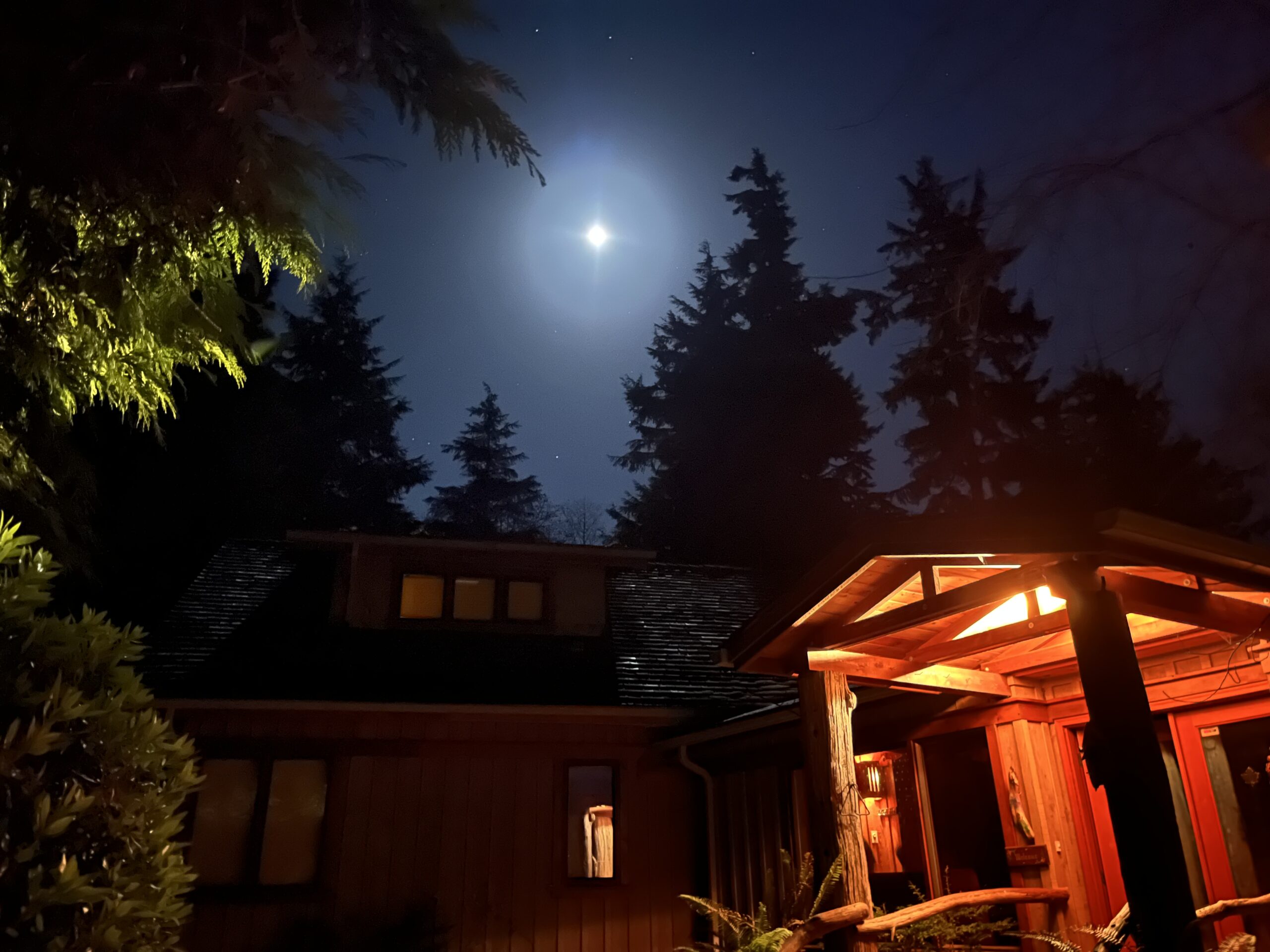
5) Resourcing this work to be sustainable
Practicing the Mortal Method has strengthened our conviction that moving in ways that honour our mortality requires more time and resources than we’re often programmed to allocate. It has given us an example of what becomes possible when this work and the people engaged in it are valued and resourced well – mentally, emotionally, physically, and financially. It has also pushed us to re-examine what ‘work’ looks like and acknowledge the ways in which we are ‘working’ outside of what is traditionally deemed as ‘work’.
“The fact that, at least for now, it seems we can do this work sustainably and in a resourced way, gives me a lot more conviction around “this is possible”…I understand that there’s privilege in it. There was a time when I just couldn’t do it because it wasn’t an option. But I think there’s guilt in being able to work in this way…I’m more sure that this is possible because I’m living it, but what does it look like to share that humbly and with an awareness of how much of this can be universal and how much of this is largely circumstantial ?” – MM, Nov 10
“One of the takeaways I’ve had is really re-examining what work looks like. And you might think you have a sense of that intellectually, but then realizing how different it feels. As you were saying Mathura, thinking about this project, I don’t count that as work time if I’m walking the dog and thinking about it. And why don’t we count that?…it’s going towards something we are doing for our work life…it’s realizing how deeply ingrained some of those things are…” – JB, Nov 24
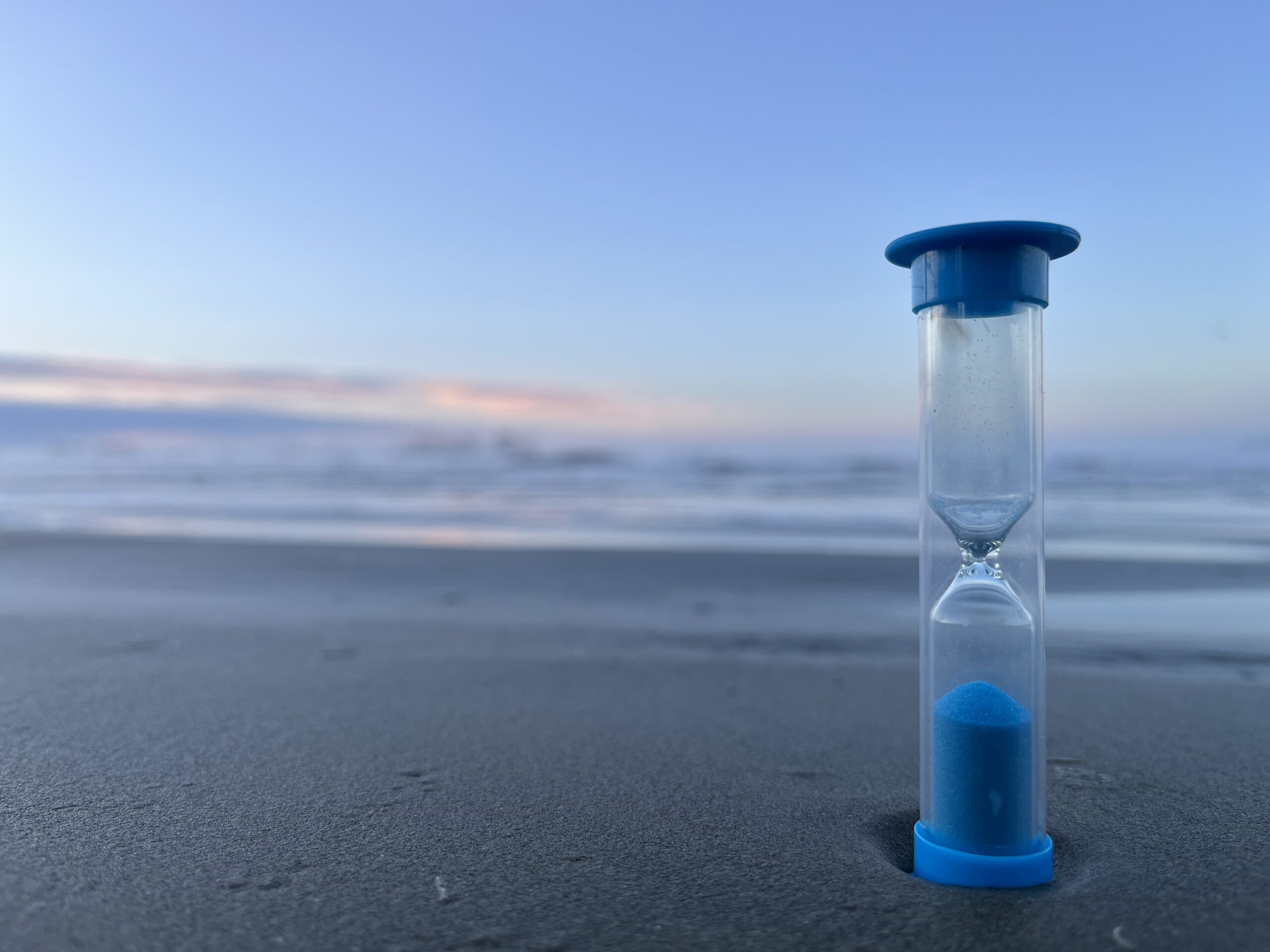
6) Building up a higher tolerance for being unskilled.
In practicing the Mortal Method and experiencing its benefits, we have also built up a higher tolerance for being unskilled at something as we are unlearning old ways and learning more life-affirming ways of thinking, being, and doing. In a world where we are celebrated for being skilled, and where our livelihoods often depend on being skilled, it makes sense that the experience of not being good at something can feel threatening. That said, noticing how unlearning patterns of disembodiment, scarcity thinking, and urgency (among others) were helping us work in ways that better honoured our mortality, was reason enough to sit with and name this discomfort rather than try to avoid it. As a counterbalance, engaging in a regular practice like the one we took part in in the lead-up to the retreat helped build up some of those new skills in an intentional way.
“I feel like I’m exercising different muscles sometimes…it feels like learning to ride a bike. And wobbling a bit and feeling like, “I’m really enjoying doing this, but I’m not as skilled at it”…Learning to think differently is a process, and a successful work day doesn’t mean I have something to show for it in the same way.” – JB, Nov 17
“I feel like there’s so much reinforcement in academia of protecting your ego…people will ask for feedback, but they don’t really want feedback. They’re like, “I just want you to accept it without revisions so that I can get this on my CV and go forward” or “I want the course evaluations to be good so that it looks good in my report to my dean annually.” There’s so much protecting of the self being good at what you do that there’s not really that openness. I loved your question about how this work is changing us because I gave a presentation on Wednesday morning with a MAID provider in the region who’s a collaborator on one of my projects. Afterwards, I emailed her and said, “Thanks for inviting me to be a part of that. What of what I shared landed? What didn’t? What do you think needs to be revisited?” And I don’t think I would have done that before, and I’m attributing it to this practice…it just wasn’t a practice of mine before and afterwards I was just like, “I don’t feel precious about it. I don’t feel like I’m not good if there’s something that needs to be changed.” – JB, Dec 1
7) Realizing the value of documentation
Documentation is a central part of my personal practice and I integrated it throughout the design and facilitation of both the Mortal Method practice and the retreat. Encouraging team members to record their responses to the practice prompts meant that we had a wealth of reflections to revisit and share with each other when we unpacked each of the qualities of mortality at the retreat. Taking notes during our calls in the lead-up to the retreat meant that I was able to feed specific questions we were grappling with in our chats into the daily practice prompts we were working through in the 30-day Apprenticeship with Mortality practice. At the retreat, there was designated wall / window space for documenting how we spent each day, how we embodied each quality at the retreat, the insights that emerged from our daily harvests, and the quotable quotes that surfaced in our conversations (also known as ‘Shit We Said’). We found that having a visual representation of our thinking and our process freed up space in our minds and bodies to make deeper connections between concepts, allowed us to see our progress over time in a tangible way, and made us feel seen and appreciated for our respective contributions.
“When I think about programming for the retreat, I’m thinking about artifacting at the same time. How do we make sure we’re capturing things and capturing things in ways that we can share if we wanted to?…Whether we use them or not is different, but how do we start to also think about this process in terms of artifacts? – MM, Nov 3
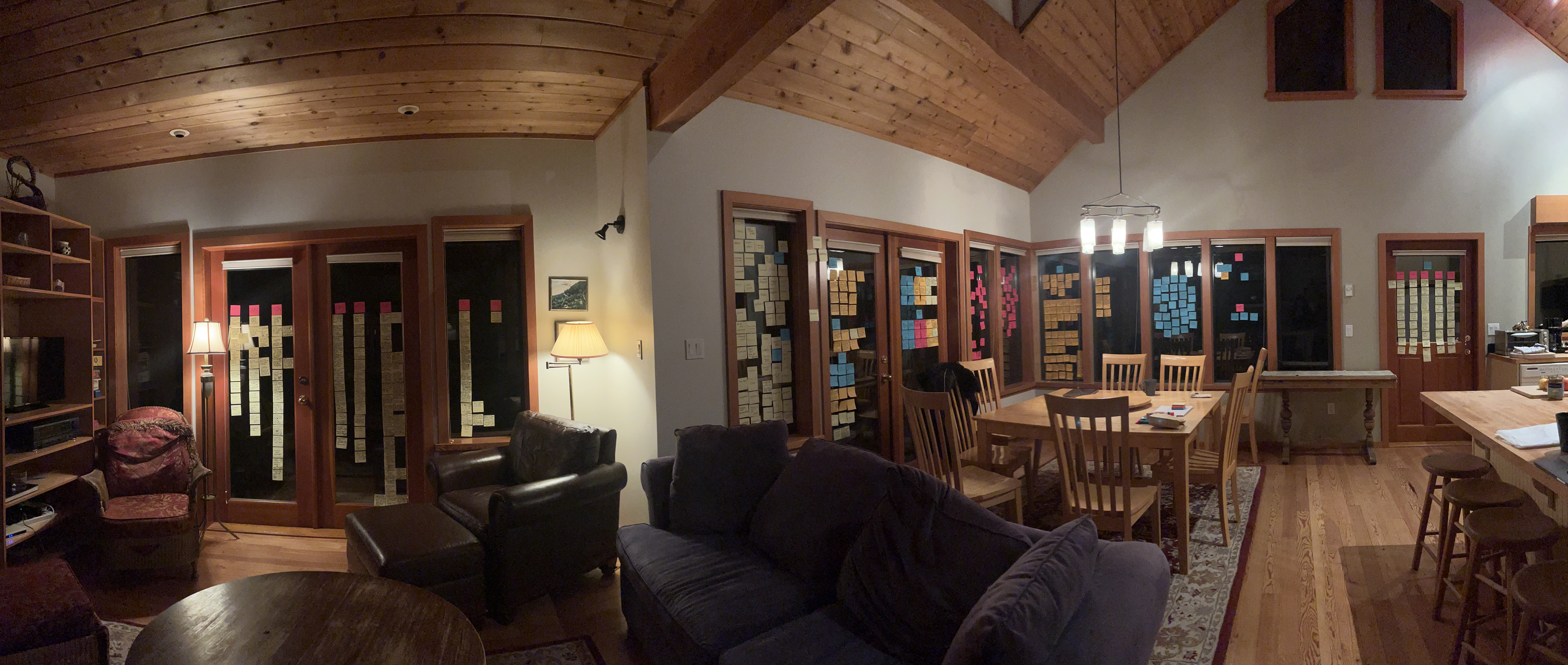
***
On the last day of the retreat, as a part of our final harvest, I invited us to answer the prompt, “How are you changed by this week and / or this work?” Below are some of the responses that emerged:
“I am reaffirmed and more embodied in long intros, luxurious on-ramps, and month-long foreplay in facilitating embodied learning and potentially transformation” – MM
“I am changed by the permission to do things differently than we’ve done in the past.” – JB
“The power of post-its & the value of visualizing our thoughts.” – JB
“Confirmation that there is time for stillness or embodiment practices.” – AB
“I have a broader notion of what work can look like.” – AB
“I am reaffirmed in the role of documentation in making people feel seen & the process feel real. We so quickly forget all the terrain we’ve travelled to get here.” – MM
“I’m re-realizing how important, and I would even say non-negotiable, movement (runs, walks, dancing) is for me in digesting and sustainably holding space for this work. It’s a must-have rather than a nice-to-have.” – MM
“We are complete when we are complete – not when the work is done.” – AB
“I am changed by the embodied + lived experience of the method. Knowing these things through trust + sensation + process rather than solely analysis.” – JB
“I have a deeper degree of acceptance of that which I cannot control (or should not control).” – JB
“I have more embodied knowing around asking for the kind of time (7 days instead of 2) and space (Tofino rather than Vancouver) that is needed to do this work well and with care.” – MM
“It reaffirmed the poignancy of reflecting people back to themselves / witnessing / seeing people’s words + ways as worthy of noting.” – JB
“I am changed by the powerful affect of pre-care, planning, apprenticeship. Must-haves.” – JB
“I am changed by stepping away from what makes me feel comfortable + capable and moving towards that which makes me feel human + connected.” – JB
“I better understand the power of preparation and that preparation can be much more than reading articles.” – AB
“I better understand that embodied being leads to embodied work (product).” – AB
